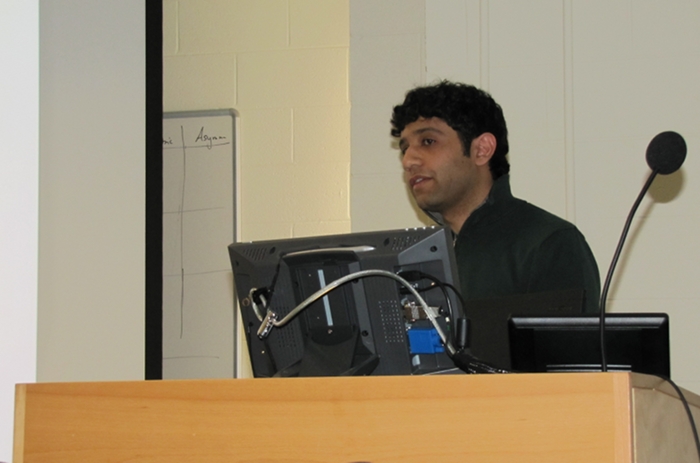NIMBioS Tuesday Seminar Series
In conjunction with the interdisciplinary activities of the National Institute for Mathematical and Biological Synthesis (NIMBioS), a seminar series will be hosted at NIMBioS every other Tuesday at 3:30 p.m. in the NIMBioS Lecture Hall on the 4th floor of 1534 White Ave., Suite 400 Seminar speakers will focus on their research initiatives at the interface of mathematics and many areas of the life sciences. Light refreshments will be served starting at 3 p.m.
 Time/Date/Location: 3:30 p.m., March 29, NIMBioS Lecture Hall, 1534 White Ave., Suite 400
Time/Date/Location: 3:30 p.m., March 29, NIMBioS Lecture Hall, 1534 White Ave., Suite 400
Speaker: Michael DeGiorgio, Dept. of Integrative Biology, Univ. of California, Berkeley
Topic: Genetic variation and modern human origins
Abstract: This talk will focus on using mathematical models to understand the demographic processes that have shaped the current distribution of genetic variation among human populations. Typical human population-genetic datasets contain genotypes from closely related individuals. Because relatives share recent common ancestors, their presence in such datasets biases estimates of genetic diversity. Thus, using pedigree analysis techniques, I derive an estimator that corrects this bias, enabling me to accurately measure genetic diversity in a study of human origins. Further, I extend the estimator to accommodate samples of arbitrary ploidy, solving the most general case and enabling investigators to apply my estimator to any species. Next, I apply my estimator as well as other measures of variation to worldwide human genetic data to investigate the extent to which models of human origins are consistent with observed patterns. I develop models of human demographic history to represent two main hypotheses, the "out-of-Africa" and "multiregional" hypotheses, for modern human origins. Using both simulations and analytical formulas, I compare measures of genetic variation observed from human data with those predicted by my models. I find that the model representing the out-of-Africa hypothesis produces patterns that mimic those observed from human data, whereas the model representing the multiregional hypothesis produces opposite patterns. These results lend support to the out-of-Africa hypothesis.
*Join us for refreshments in the NIMBioS Lobby on the 4th floor at 3 p.m.
Seminar Flyer (pdf)

NIMBioS
1122 Volunteer Blvd., Suite 106
University of Tennessee
Knoxville,
TN 37996-3410
PH: (865) 974-9334
FAX: (865) 974-9461
Contact NIMBioS


